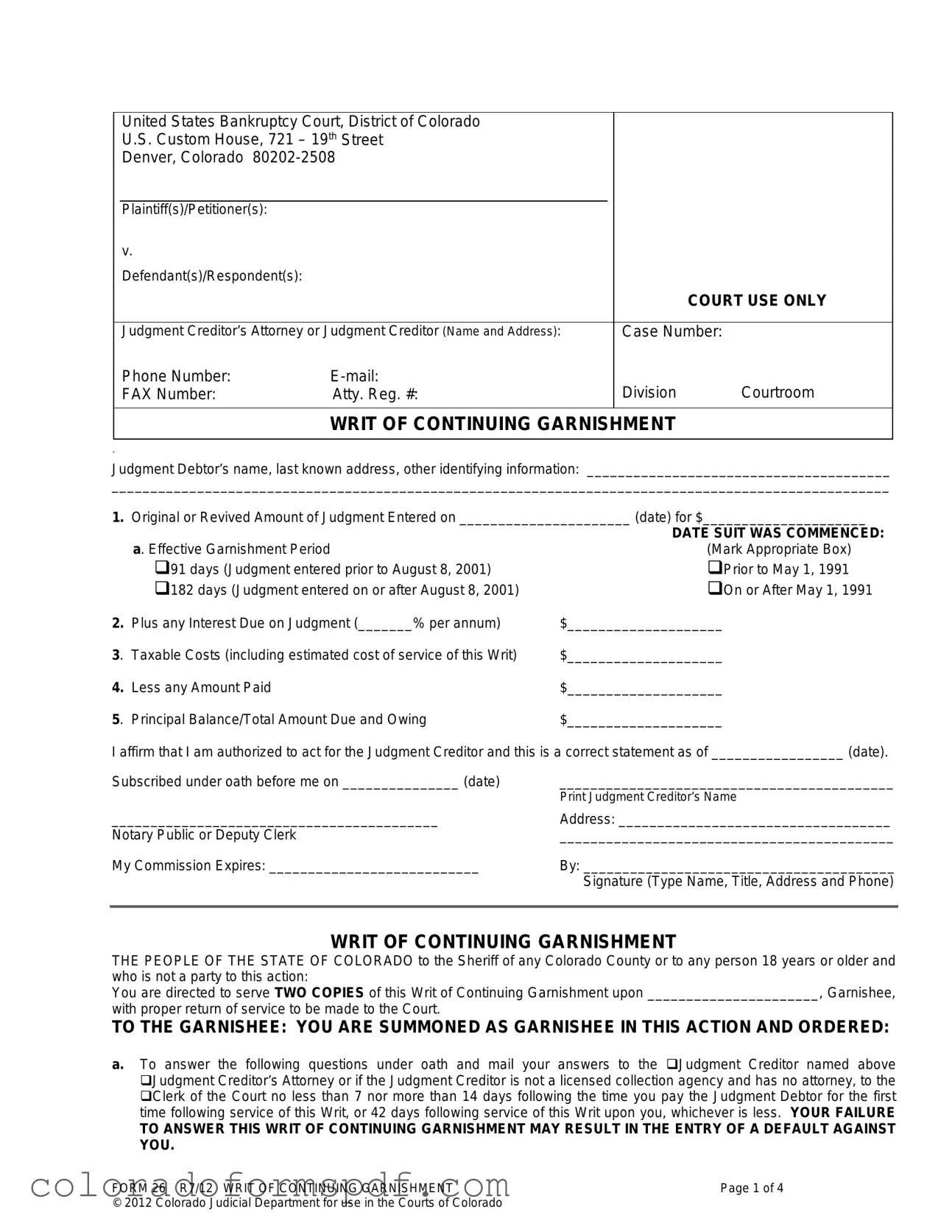The Colorado 26 form, known as the Writ of Continuing Garnishment, plays a critical role in the enforcement of court judgments within the state. This legal document allows a judgment creditor to collect debts by garnishing the wages or earnings of a judgment debtor. It requires the identification of both the creditor and the debtor, as well as the judgment details, including the original amount, interest, and any costs associated with the judgment. The form outlines the effective garnishment period, which can vary based on the date the judgment was entered, and it mandates that the garnishee—typically the debtor's employer—respond to specific inquiries about the debtor's earnings. The garnishee is also instructed to withhold a portion of the debtor's nonexempt earnings and remit these funds to the creditor. Additionally, the form contains important notices for both the garnishee and the judgment debtor, informing them of their rights and obligations under the law. Given its complexity and the potential consequences of non-compliance, understanding the Colorado 26 form is essential for all parties involved in the garnishment process.
